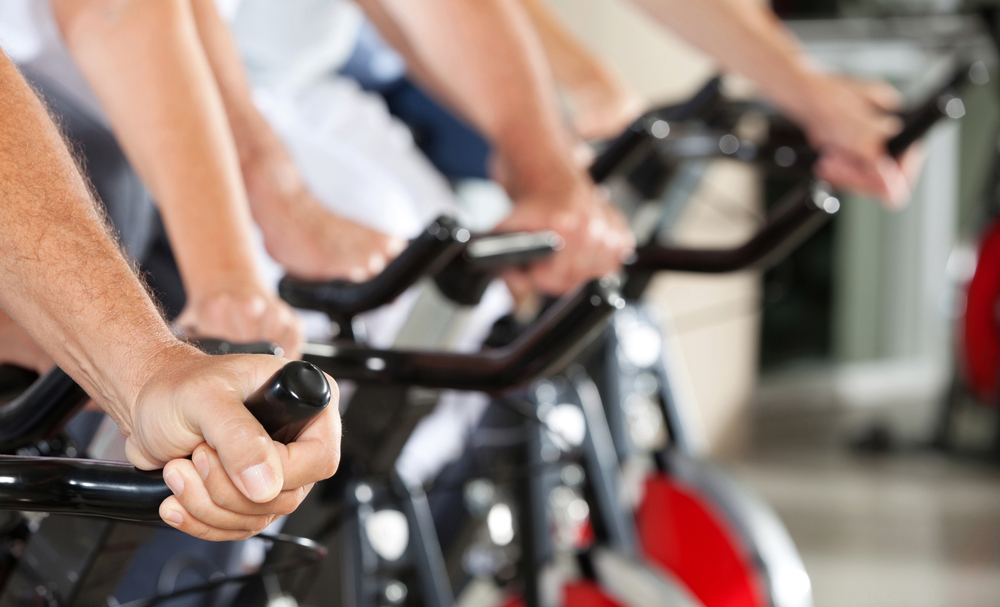Can stationary aerobic cycling improve walking ability with post-stroke patients? Article review.
Posted on 10th February 2014 by Brad Jennings

Lee MJ, Kilbreath SL, Singh MF, Zeman B, Lord SR, Raymond J, Davis GM. Comparison of effect of aerobic cycle training and progressive resistance training on walking ability after stroke: a randomized sham exercise-controlled study. J Am Geriatr Soc. 2008 Jun;56(6):976-85.
Introduction
I am interested in treating patients with neurological disorders specifically individuals experiencing a stroke. The deficits and impairments that come with a neurological disorder can be detrimental to someones functional abilities and quality of life. I look at these extreme deficits as a potential for an immense area of improvement and recovery that can be achieved with appropriate treatment. My goal throughout my career will be to learn as much as I can about the appropriate interventions that will most help my patients. I have worked with many patients who have experienced a stroke while on my two-month clinical at a neurological rehabilitation hospital. We have incorporated functional mobility, ambulation, strength training, aerobic cycling, and neurological dynamic training to our treatment plan. I chose to do this article review because I wanted to see if stationary aerobic cycling was effective as an intervention plan for patients who experienced a stroke.
Walking related to stroke
A major deficit with individuals who experience a stroke is decreased walking ability. Lower extremity strength, coordination, and aerobic conditioning are limited due to this neurological disorder. Unilateral hemiparesis (weakness of one side of the body), or even hemiplegia (total paralysis of one side of the body) significantly alter ones ability to walk. This weakness impairs a person’s ability to function with daily activities needed to function independently. Walking in the community is very difficult specifically with longer distances, or even crossing the street in time before the pedestrian crosswalk safety light ends. Past studies have found improved walking ability with strength and aerobic training on non-stroke patients. However, current research is limited with the effectiveness on stationary cycling as a means to improve walking ability. Cycling can be used as both a form of strength and aerobic training. The primary goal of this study was to determine whether participation in a 10-week high-intensity exercise program comprising aerobic training, progressive resistance training (PRT), or a combination of the two would improve walking ability.
About the study
There were 52 subjects with a history of a stroke aged between 54 and 72 years-old, and 3 to 111 months post-stroke. Participants undertook 30 one-hour exercise sessions over 10 to 12 weeks. Individuals were randomly assigned to one of four groups: 1) Cycling only, 2) Strengthening exercises only, 3) Cycling and strengthening exercises, 4) Control (neither cycling or strengthening). The primary outcomes used to determine the effects of each group were a 6-minute walk test, habitual gait velocity, fast gait velocity, and stair climbing power.
Results of the study
Neither cycling nor strength training improved walking distance or gait velocity significantly more than sham exercise, although subjects that cycled improved their 6-minute walk test by 12.1m compared to sham cyclists. Strength training significantly improved participants’ stair climbing power by 17% (p = .009), as well as their muscle strength, power, and endurance. Aerobic cycling improved indicators of cardiorespiratory fitness only. Cycling plus PRT produced larger effects than either single modality for mobility and impairment outcomes.
What does this all mean?
Overall their findings do not support their hypothesis that aerobic cycling or strength training will improve walking distance by at least 20%. However, the cycling group, strengthening group, and combined group all increased in ambulation distance compared to the control group by 12.1m, 7.6m, and 19.6 m respectively. The hypothesis that both cycling and resistance training may be superior to single-mode training was incorrect based on non-significant findings of primary outcome measures. However, improvements in secondary outcomes such as cardiorespiratory fitness show the positive effects of stationary aerobic cycling.
My thoughts
I feel that the authors did a tremendous job at presenting their research in an organized and coherent manner. Charts, graphs, and appropriate headings were used while making it effortless to locate data. For example, the inclusion and exclusion data were clearly defined and easily found in the methods section. Each group performed a realistic intervention that is easily reproducible in a future setting. The outcome measures were numerous and important to daily functioning. The authors did a great job at assessing general health by having each patient perform a quality of life questionnaire (SF-36). I also found a couple of areas in this study that needed improvement. For example, the limitations were not clearly defined in the discussion topic. Another negative of this study was the classification of cycling to aerobic, and resistance training to strengthening. Cycling entails some portion of strengthening, and resistance training incorporates some form of aerobic conditioning. I would have liked to have seen this study talk more about the resistance used in cycling and the possible effects of strengthening.
Would I use cycling to increase ambulation distance?
There is no clear answer to this question. Everything depends on the patient. This study shows that both strengthening and aerobic conditioning help with patient goals. A multi-intervention approach incorporating aspects like walking, strengthening, proprioception, and endurance help to address many impairments as shown in past research. I would not be against aerobic cycling for my future post-stroke patients.




No Comments on Can stationary aerobic cycling improve walking ability with post-stroke patients? Article review.
As a erstwhile cyclist, I’m hoping it can and I’ll be back on the bike next season.
3rd September 2014 at 5:14 amI appreciate, cause I found just what I was looking for. You have ended my 4 day long hunt! God Bless you man. Have a great day. Bye keekaeddgdec
17th September 2014 at 11:04 am